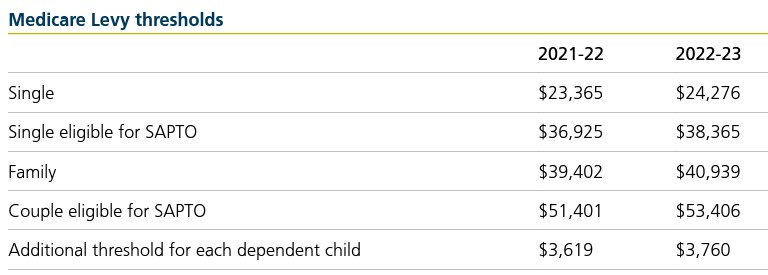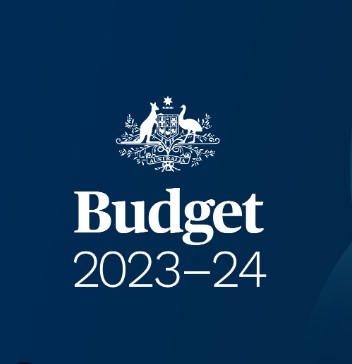Chris Forrest- Senior Partner and Principal Adviser
Sovereign Wealth Partners
The budget headline was dominated by a projected surplus of $4 billion thanks to record low unemployment and higher than expected commodity revenue despite a net increase in spending.
Digging a little deeper we find, for individuals, there was almost no new news.
Please note- ALL the proposals below require passage through legislation before they can be implemented.
Superannuation
The proposal of a $3million balance cap on superannuation has already been announced. This cap includes all superannuation and pension funds for an individual. Earnings on the balance above this amount will be taxed at an increased rate of 30% (including unrealised gains), being an additional 15% on top of the existing 15% tax in super.
The additional tax on earnings imposed by this measure will impact around 80,000 individuals in 2025–26, or approximately 0.5 per cent of individuals with a superannuation account. The measure will not place a limit on the amount of money an individual can hold in superannuation. The current contributions rules would continue to apply.
Whilst the detail of this measure is yet to be finalised, at this point there is still no proposal to index the cap to inflation. This means that over time the value of the cap will fall in real terms and impact more and more Australians.
From 1 July 2026, employers will be required to pay Superannuation Guarantee (SG) entitlements on the same day they pay salary and wages.
Income tax rates
Dispite speculation to the contrary, there was no change to the Stage 3 tax cuts legislated by the previous government to combat bracket creep.
| Taxable Income | Current Tax Rates until 30 June 2024 |
| Up to $18,200 | 0 |
| $18,201 – $45,000 | 19% |
| $45,000 – $120,000 | 32.5% |
| $120,001 – $180,000 | 37% |
| From $180,001 | 45% |
| Taxable Income | Tax Rates from 1 July 2024 |
| Up to $18,200 | 0 |
| $18,201 – $45,000 | 19% |
| $45,000 – $120,000 | 32.5% |
| $120,001 – $180,000 | 37% |
| From $180,001 | 45% |
Medicare
The Medicare levy low-income threshold will increase for singles and families to account for inflation.

Small Business Support
Small business will benefit from two measures:
- $20,000 instant asset write-off or the 2024 financial year. Small business (those with less than $10 million annual turnover) will be able to instantly write-off assets which cost less than $20,000 each.
- Business energy incentive – small and medium business (those with less than $50 million turnover) will be able to deduct an additional 20% of the cost of eligible depreciating assets that support electrification and more efficient energy use. A maximum bonus deduction of $20,000 applies to the incentive. Eligible assets must be first used or installed in the 2024 financial year.
Cost of living relief
Energy price relief plan – From July 2023 this plan will deliver up to $500 in electricity bill relief for eligible households and up to $650 for eligible small businesses. Beneficiaries are expected to include pensioners, Commonwealth Seniors Health Card holders, Family Tax Benefit A and B recipients and small business customers of electricity retailers.
Home Guarantee Scheme – Expand the eligibility criteria of the Home Guarantee Scheme to:
- Allow any 2 eligible people to be joint applicants for a guarantee beyond spouses and de facto partners
- Allow non-first home buyers who have not owned a property in Australia for at least 10 years to access the First Hom Guarantee and Regional Home Guarantee
- Allow a single legal guardian of children to access the Family Home Guarantee
- Allow Australian permanent residents to access the Scheme
Cheaper Child Care – From 1 July 2023, the Child Care Subsidy rates will increase up to 90% for eligible families and up to 95% for any additional children in care aged 5 and under.
Aged Care workers – an increase in the award wages of 15% from 30th June 2023 for many aged care workers.
Social Security
Home care – an additional 9,500 Home Care packages to be released in the 2023-34 years.
Working age payments – an increase in the base rate of working age and student payments by $40per fortnight. Also, an increase in the JobSeeker payments for those over age 60 as well as over 55 if they have been on the payment for 9 consecutive months or more.
Work Bonus – an extension of the existing payment to include a once-off credit of $4,000 to their Work Bonus income until 31 December 2023. Pensioners will be able to earn up to $11,800 before their pension is reduced.
Parenting Payment (single) – From 20 September, eligible single parents will receive Parenting Payment (single) until their youngest child turns 14 years old (currently 8 years old).
And, for most of our clients that’s it!
The rest of the budget contained broad based initiatives to support renewables, a crackdown on vaping alongside savings measures in the form of increased taxes and a review of the NDIS.
In aggregate, none of this is expected to impact financial markets much. The additional expenditure risks boosting demand and adding to current inflation pressures but given the projected budget surplus (i.e. more money is being taken out of the economy than added), this is not a compelling objection.





